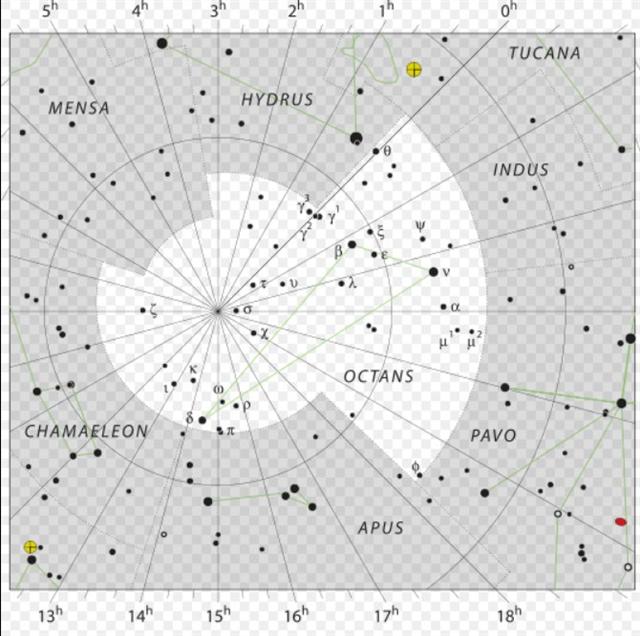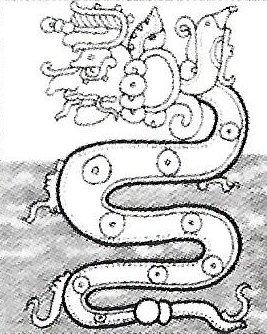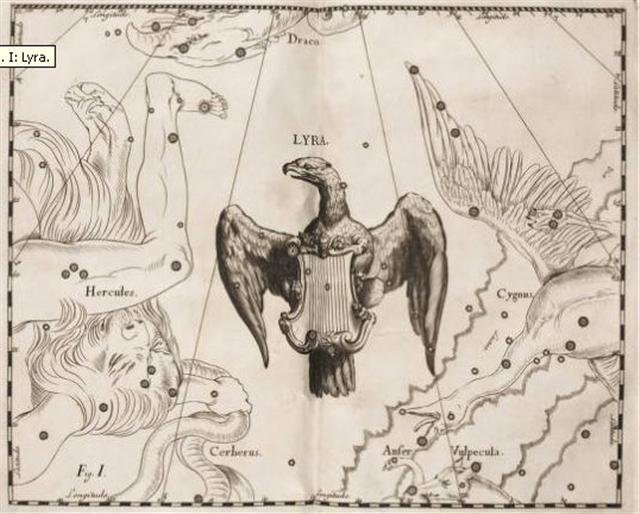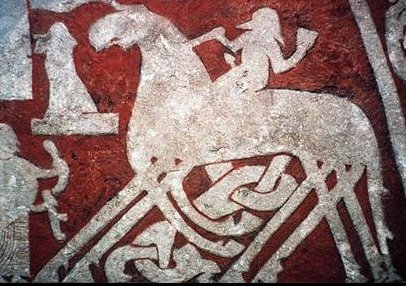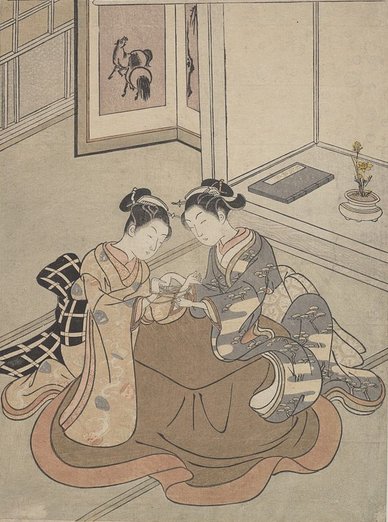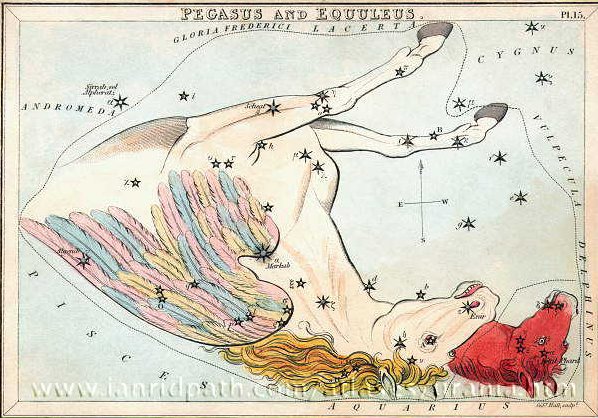Ba7.1 Once again. Clearly the beginning up in the north once upon a time had been at the very bright Vega (α Lyrae):
... on the lee side of our uquutaq (a snow windbreak) I positioned a harpoon [vero] pointing directly at this particular star to see if it would move. In the morning I checked it and discovered that the Tukturjuit (Ursa Major) had changed their position completely but the harpoon still pointed at this star ... I had discovered the stationary star ... And the beginning down in the south was nowadays at the very faint Dramasa (σ Octantis):
If we should adopt a perspective of agricultural growth (from bottom up like the rongorongo text lines - or like Imix)
it would be reasonable to see Vega not at the beginning but at the end of the development. And, indeed, the position of heliacal Vega was in December 27 at the end of line Ba5. Here, one could imagine, the great 'fire' of the old year had turned into ashes (gone away, ku oho),
and cold (air froide, hupee) was therefore creeping in, causing the earth to tremble as if in fever (ruru). ... it is told that he [Gilgamesh] lives in splendor and dissoluteness, and makes a nuisance of himself until the gods bring relief to his people by rearing a human being, either twin or counterpart,³ who can stand up to him. It is Enkidu, the man of the Wilds, a kind of wolf-child as simple as the beasts he plays with, a happy son of nature, hairy all over, grown to enormous strength ... ³ Actually, the goddess Aruru makes him 'in the likeness of Anu', literally 'a zikru of Anu she conceived in her heart'. But Enkidu is also said to look like Gilgamesh 'to a hair' ... ... Ishtar appears on the walls of Uruk and curses the two heroes who have shamed her, but Enkidu tears out the right thigh of the Bull of Heaven and flings it in her face, amidst brutal taunts. It seems to be part of established procedure in those circles. Susanowo did the same to the sun-goddess Amaterasu, and so did Odin the Wild Hunter to the man who stymied him. A scene of popular triumph and rejoicings follows. But the gods have decided that Enkidu must die, and he is warned by a somber dream after he falls sick ... ... In Babylonian religion, Sarpanit (alternatively Sarpanitu, Zarpanit, Zarpandit, Zerpanitum, Zerbanitu, or Zirbanit) is a mother goddess and the consort of the chief god, Marduk. Her name means 'the shining one', and she is sometimes associated with the planet Venus. By a play on words her name was interpreted as zēr-bānītu, or 'creatress of seed', and is thereby associated with the goddess Aruru, who, according to Babylonian myth, created mankind. Her marriage with Marduk was celebrated annually at New Year in Babylon. She was worshipped via the rising moon, and was often depicted as being pregnant. She is also known as Erua. She may be the same as Gamsu, Ishtar, and / or Bēlit ...
However, between Vega and 0h there were first 3 days in order to reach day number 4 * 91 = 7 * 52 = 364 and then a further 1 + 80 = 81 days in order to reach to the 'Navel of the Horse' (α Andromedae, Sirrah) - where 'navel' implies the idea of birth and 'the horse' presuambly refers to the Horse of the Sun.
In other words the Navel of the Horse was a name for spring equinox. The Tail of the Horse (δ Centauri) came *366 / 2 = *183 right ascension days later in September 20 (263 = 80 + 183).
. Summing up 3 + 81 = 84 days (= 12 weeks), suggests the Julian (Roman) date for spring equinox ('March 25 = day 80 + 4 = 84) was an adjustment to keep the old structure intact when the new year was determined to begin with January 1.
The end of glyph line Ba5 was designed to be at right ascension day *74 + *207 = *281 (Vega) = December 27 (361 = 19 * 19).
The end of line Ba6 ought therefore be in the night when the Full Moon would be visible at the place for day 361 (December 27) + 44 = 405 (February 9, *325) - an allusion to 3-25 ('March 25) and to the year of the Council of Nicaea: ... When Julius Caesar established his calendar in 45 BC he set March 25 as the spring equinox. Since a Julian year (365.25 days) is slightly longer than an actual year the calendar drifted with respect to the equinox, such that the equinox was occurring on about 21 March in AD 300 and by AD 1500 it had reached 11 March. This drift induced Pope Gregory XIII to create a modern Gregorian calendar. The Pope wanted to restore the edicts concerning the date of Easter of the Council of Nicaea of AD 325 ...
We could then predict that the end of line Ba7 should be in day 222 + 44 = 266 according to the Gregorian calendar, viz. in the day after the September equinox (265):
However, by counting properly from the positions of the stars and their right ascension lines, connecting the pole in the north with the pole in the south, ... It should be stated right now that 'fire' is actually a great circle reaching from the North Pole of the celestial sphere to its South Pole ... we will find the place should be not in the day after the equinox but precisely at the September equinox, i.e. when the Full Moon would be at the right ascension line for Gienah in the Raven constellation:
|
||||||||||||||||||||||||||||||||||||||||||||||||||||||||||||||||||||||||||||||||||||||||||||||||||||||||||||||||||||||||||||||||||||||||||||||||||||||||||||||||||||||||||||||||||||||||||||||||||||||||||||||||||||||||||||||||||||||||||||||||||||||||||||||||||||||||||||||||||||||||||||||||||||

